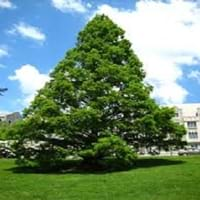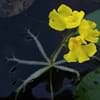Life Span
Perennial
Perennial
Type
Aquatics
Needled or Scaled Evergreen
Origin
Northeastern United States, Mid-Atlantic United States, Southeastern United States, North-Central United States, Central United States, South-Central United States, Canada
China
Types
Not Available
Not available
Habitat
Moist Soils, Terrestrial, Upland, Wet lands
Deciduous forests, Mixed deciduous forest
USDA Hardiness Zone
3-11
5-9
Sunset Zone
21,22
A3, 3a, 3b, 4, 5, 6, 7, 8, 9, 10, 14, 15, 16, 17, 18, 19, 20, 21, 22, 23, 24
Habit
Thicket/Colonizing
Pyramidal
Flower Color
White
Green, Light Green
Flower Color Modifier
Not Available
Bicolor
Fruit Color
Brownish Red
Brown
Leaf Color in Spring
Green, Dark Green
Light Green
Leaf Color in Summer
Green, Dark Green
Green, Light Green
Leaf Color in Fall
Green, Dark Green
Orange, Bronze
Leaf Color in Winter
Not Available
Not Available
Leaf Shape
Heart-shaped
Alternate
Plant Season
Spring, Summer, Fall
Spring, Summer, Fall, Winter
Sunlight
Full Sun, Partial Sun, Partial shade
Full Sun
Type of Soil
Loam
Clay, Loam
The pH of Soil
Acidic, Neutral
Acidic, Neutral
Soil Drainage
Average
Average
Bloom Time
Summer
Indeterminate
Tolerances
Wet Site
Drought
Where to Plant?
Container, Ground, Pot
Ground
How to Plant?
From Rhizomes, Root Division
Seedlings
Plant Maintenance
Medium
Medium
Watering Requirements
Needs Very high moisture
Needs small amount of water
In Summer
Lots of watering
Lots of watering
In Spring
Moderate
Moderate
In Winter
Average Water
Average Water
Soil pH
Acidic, Neutral
Acidic, Neutral
Soil Type
Loam
Clay, Loam
Soil Drainage Capacity
Average
Average
Sun Exposure
Full Sun, Partial Sun, Partial shade
Full Sun
Pruning
Remove damaged leaves, Remove dead branches, Remove dead leaves
Prune if you want to improve plant shape, Remove damaged leaves, Remove dead branches, Remove dead leaves
Fertilizers
All-Purpose Liquid Fertilizer
All-Purpose Liquid Fertilizer, Compost
Pests and Diseases
bees
Dry root rot, Free of serious pests and diseases, fungus
Plant Tolerance
Drought
Deer resistant, Drought
Flowers
Showy
Insignificant
Flower Petal Number
Single
Single
Foliage Texture
Medium
Fine
Foliage Sheen
Matte
Glossy
Attracts
Bees, Flies, Turtles
Birds, Squirrels
Allergy
allergic reaction, Pollen
Pollen
Aesthetic Uses
Bog Garden, Showy Purposes, Water gardening, Wild gardens
along a porch, deck or patio, Beautification, Landscape Designing, Showy Purposes, Wild gardens
Beauty Benefits
Not Available
Not Available
Environmental Uses
Air purification
Air purification
Medicinal Uses
Insect Bites, Treating fever
Unknown
Part of Plant Used
Flowers, Leaves, Root
Not Available
Other Uses
Grown in botanical gardens as a specimen, Used as Ornamental plant
deer resistant, Shelterbelt, Showy Purposes
Used As Indoor Plant
Sometimes
No
Used As Outdoor Plant
Yes
Yes
Garden Design
Container, Water Gardens, Wildflower
Feature Plant, Shade Trees, Street Trees
Botanical Name
SAURURUS cernuus
METASEQUOIA glyptostroboides
Common Name
Lizard's Tail
dawn redwood
In Hindi
Saururus cernuus
dawn redwood
In German
Saururus cernuus
Urweltmammutbaum
In French
Saururus cernuus
aube séquoia
In Spanish
cernuus Saururus
metasecuoya
In Greek
Saururus cernuus
dawn redwood
In Portuguese
Saururus cernuus
amanhecer Redwood
In Polish
Saururus cernuus
świt sekwoja
In Latin
Saururi cernuus
dawn redwood
Phylum
Tracheophyta
Pinophyta
Class
Magnoliopsida
Pinopsida
Family
Saururaceae
Cupressaceae
Genus
Saururus
Metasequoia
Clade
Angiosperms, Magnoliids
Not Available
Tribe
Not Available
Not Available
Subfamily
Not Available
Sequoioideae
Number of Species
Not Available
Not Available
Importance of Saururus cernuus and Dawn Redwood
Want to have the most appropriate plant for your garden? You might want to know the importance of Saururus cernuus and Dawn Redwood. Basically, these two plants vary in many aspects. Compare Saururus cernuus and Dawn Redwood as they differ in many characteristics such as their life, care, benefits, facts, etc. Every gardener must at least have the slightest clue about the plants he wants to plant in his garden. Compare their benefits, which differ in many ways like facts and uses. The medicinal use of Saururus cernuus is Insect Bites and Treating fever whereas of Dawn Redwood is Unknown. Saururus cernuus has beauty benefits as follows: Not Available while Dawn Redwood has beauty benefits as follows: Not Available.
Compare Facts of Saururus cernuus vs Dawn Redwood
How to choose the best garden plant for your garden depending upon its facts? Here garden plant comparison will help you to solve this query. Compare the facts of Saururus cernuus vs Dawn Redwood and know which one to choose. As garden plants have benefits and other uses, allergy is also a major drawback of plants for some people. Allergic reactions of Saururus cernuus are allergic reaction and Pollen whereas of Dawn Redwood have Pollen respectively. Having a fruit bearing plant in your garden can be a plus point of your garden. Saururus cernuus has no showy fruits and Dawn Redwood has showy fruits. Also Saururus cernuus is not flowering and Dawn Redwood is not flowering . You can compare Saururus cernuus and Dawn Redwood facts and facts of other plants too.





